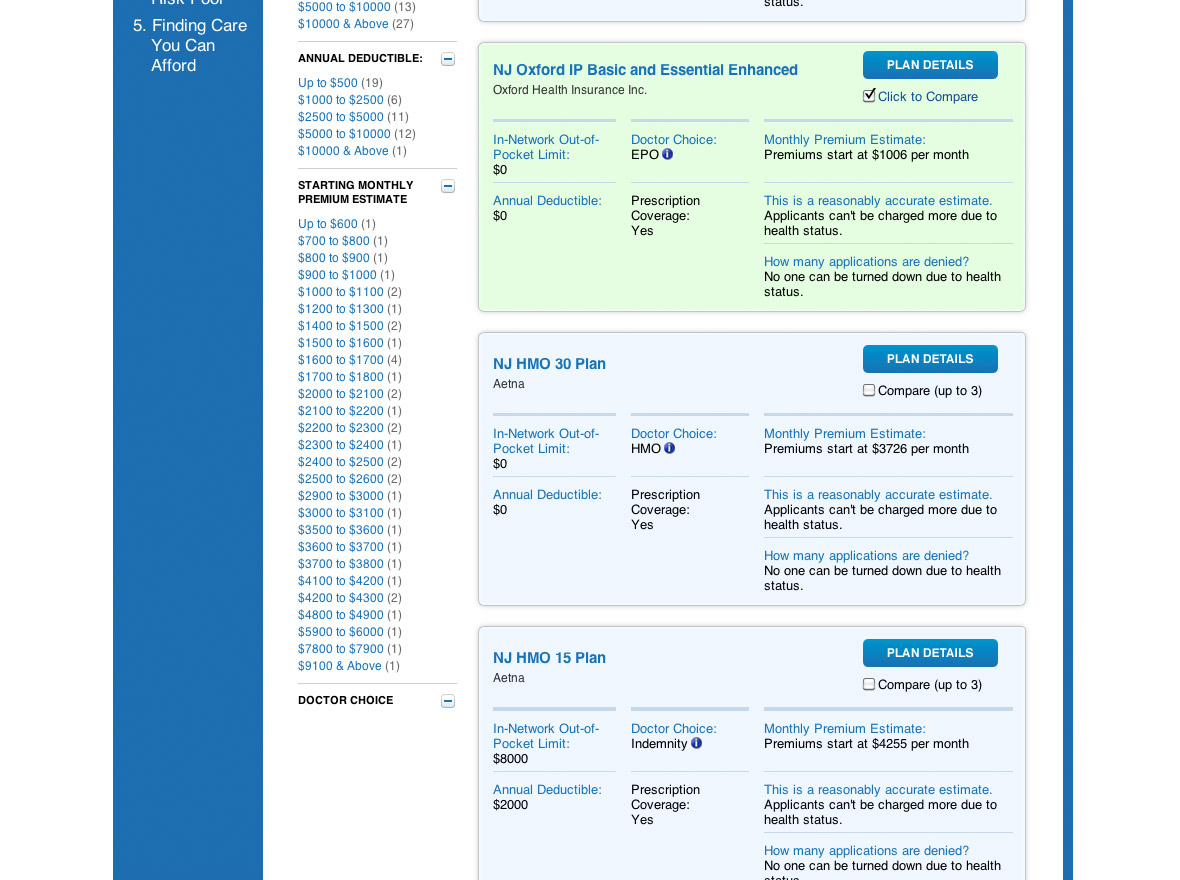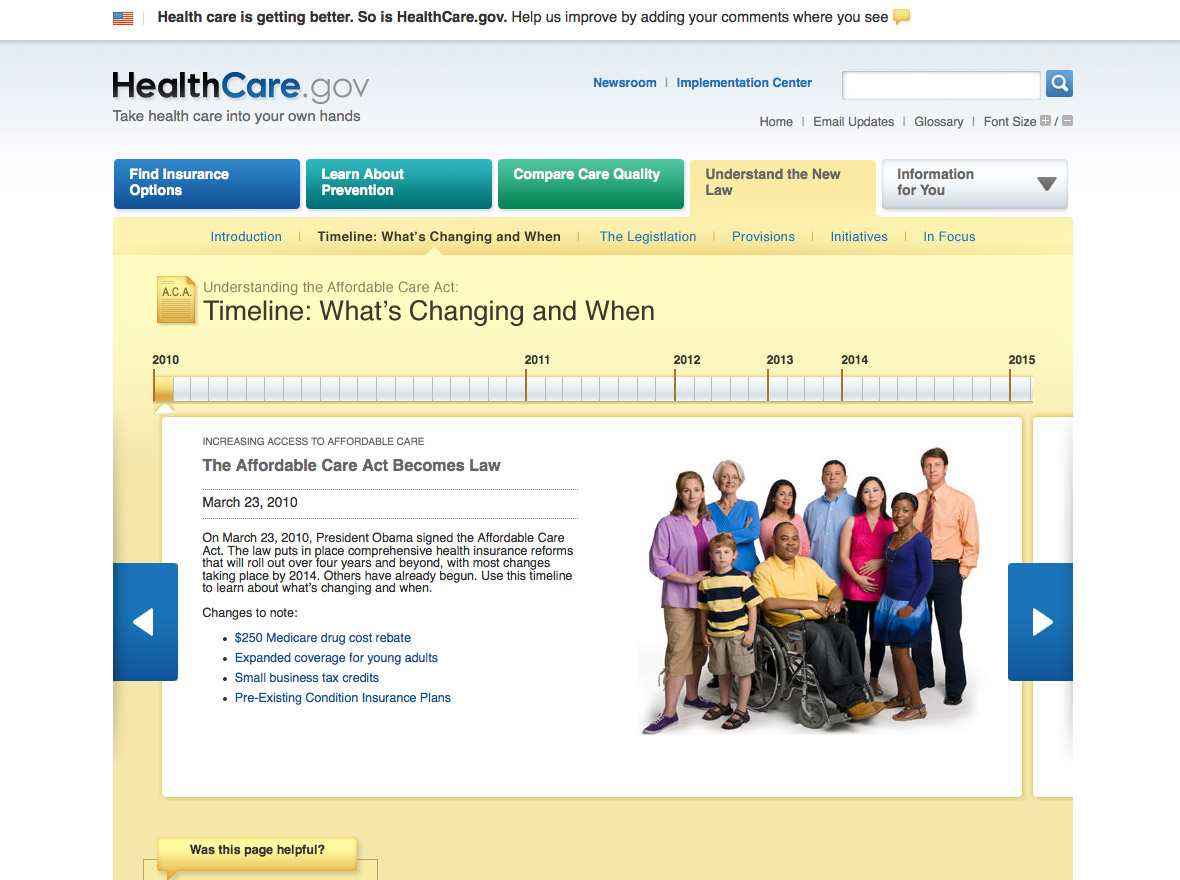Happy 12th birthday, HealthCare.gov! “Wait, 12?” Yes, 12! HealthCare.gov, the Affordable Care Act website that has extended access to quality health insurance to millions, launched on July 1, 2010. Some people think that the launch of the Health Insurance Marketplace in October 2013 was the start of HealthCare.gov, but no. That infamously rocky launch was version 2 dot something, a relaunch that greatly expanded the website’s functionality to include the ability to apply for Medicaid, CHIP, or purchase individual private health insurance, usually at reduced rates.
I was fortunate to have been asked to join the team that launched Healthcare.gov in 2010 under some unusual circumstances, and again in 2012/2013.

HealthCare.gov 1.0
HealthCare.gov 1.0 launched just over 3 months after the passage of the Affordable Care Act. The date was set in the legislation. I’ve heard that as negotiations dragged out and the law’s passage was pushed back, lawmakers overlooked updating the launch date to a more reasonable timeframe.

HealthCare.gov 1.0 did a few important things. It offered a lightweight screener tool where visitors could enter in a few details and, for the first time ever, see all the public and private health insurance options that were available to them. Previously, there had never been a tool that exposed all the private health insurance plans that were available for people to buy. The government had never collected details on these plans; it was a closed market.

A month later, we added pricing info. This was the first time anyone looking to buy coverage could see costs of all the plans available for them. It also showed how lousy many of those private plans were. They were not yet aligned with the safeguards the ACA would put in place later, like qualified health plans, so they were expensive and often provided poor coverage. But it was the beginning of cost transparency, allowing both the public and the government to learn what was being charged and what was being covered.

HealthCare.gov also included information about how the law was going to be implemented and when people would start seeing the benefits of the ACA. This transparency was important for such a politically charged issue. It also brought together a number of tools that allowed users to view care quality ratings for various providers into one place.

It was a hit
The site got lots of praise in the press with headlines like “Hey, Sometimes Government Works” and “The government is here to help. Really.” The White House thought it was such an accomplishment that President Obama did the demo video for it. (To my knowledge, this remains the only time this has ever happened.)
Seeing the government turn around such a big effort in unusually quick time—this was 2010 after all—was kind of shocking. It was the first tangible outcome of the passage of the law, which some ACA opponents felt was impossible to implement. It seemed to give the folks implementing the law a boost…and maybe some false confidence about the ease of such projects.
Todd Park, then Department of Health and Human Services Chief Technology Officer (HHS CTO) and the kind and fearless leader of the effort, went on to become the United States Chief Technology Officer (US CTO), allowing him to act on a broader scale, creating the Presidential Innovation Fellows (PIF) program (18F and United States Digital Service, or USDS, predecessors), expanding open data efforts, and more.Of course, that’s not the whole story.In June 2013, HealthCare.gov relaunched as a new educational resource to help people get ready for the first open enrollment period and find out whether their state would be using HealthCare.gov or a state-run exchange. This launch was a success too. It was a fast, static site built on Jekyll, well before it was common. It was built in the open on Github. It was talked-up at SXSW. It was featured in The Atlantic.
So up to that point, HealthCare.gov had a public image of the government doing tech right. There were enough positive aspects to tout that any negatives were outweighed. But that balance soon shifted.
Then…
The troubled October 2013 launch has been well documented. It’s now part of civic tech lore. HealthCare.gov was and remains a complex site that realized a very complex law. From a product standpoint, it had an extremely broad set of components adhering to an enormous set of requirements. At launch, many aspects of HealthCare.gov worked well, but they were blocked by the key parts that didn’t. And if your users can’t achieve their goals, it doesn’t matter what you got right.

Building trust in institutions
Now more than ever, the importance of proving that government can effectively deliver services to the public is clear. Trust is earned through cumulative experiences, built with steady incremental progress. It requires identifying root causes and building sound foundations that make success easier to obtain next time. It involves tangible, public facing interfaces and unseen foundation: infrastructure, technical operations, government employee tools. Nava works across these areas.
Nava’s founders were brought in by the Obama Administration to help rebuild HealthCare.gov. That team built a suite of digital tools, like reliable authentication and account management, that still serves about 54 million people today. This incremental, meaningful progress addressed a key point of failure of the October 2013 launch. Nava went on to operate CMS Cloud, the cloud platform upon which HealthCare.gov is built. Effective technical operation of CMS Cloud has led to a highly available service and well-tuned operations that immediately act on trends and indicators before they impact service.
First the fire
Ultimately, HealthCare.gov wasn’t so broken that it couldn’t get back on track and meet its enrollment goals. It took a lot of work, but it did. And like a forest after a fire, new growth emerged. HealthCare.gov was the catalyst for a number of things ready to sprout. It gave innovators within government the justification they needed to advance their changes. It provided a unifying narrative for attracting and growing technical teams within the government like 18F and USDS. It exposed the brittleness of the way technology was specified and procured. It laid bare the need for modern methods and vendors who used them. I doubt these things would have happened if the launch had gone acceptably well.So once again, happy birthday, HealthCare.gov! It’s been quite a journey.
Written by

Technical Solutions Director


